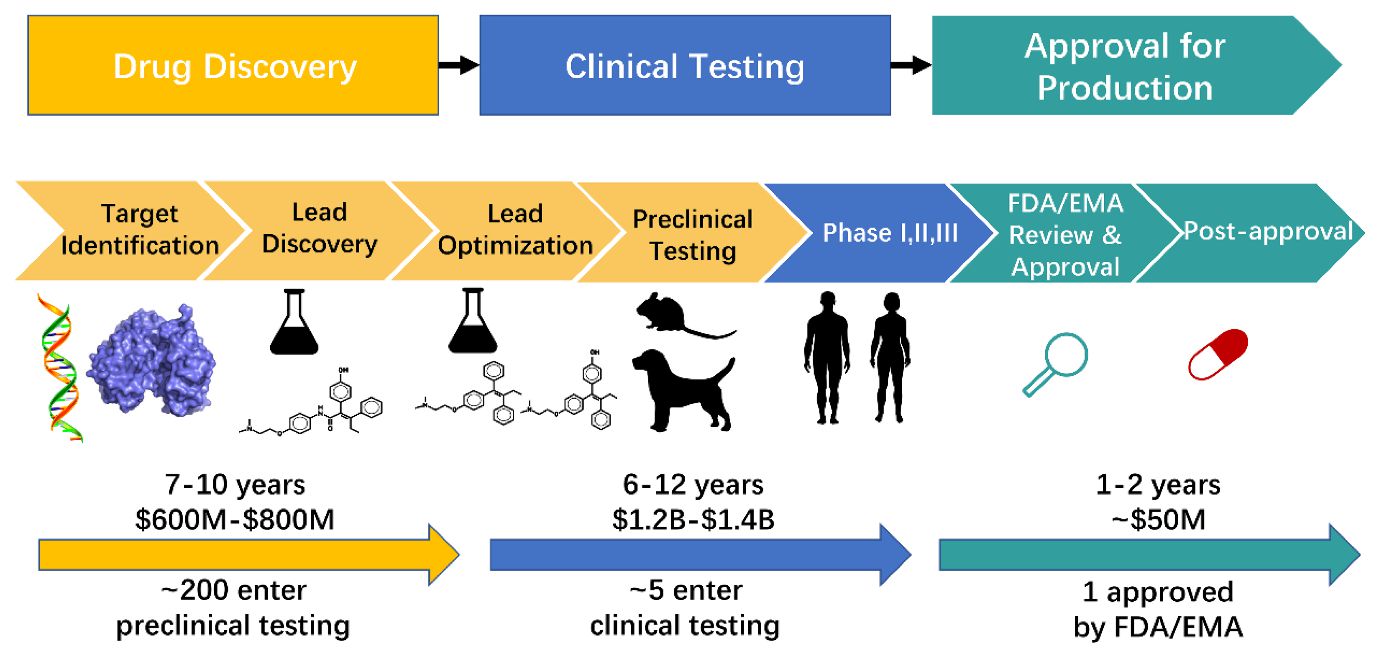The Future Of Drug Discovery: D-Wave's Quantum Computing Advancements

Table of Contents
D-Wave's Quantum Annealing Approach and its Relevance to Drug Discovery
Quantum computing harnesses the principles of quantum mechanics to solve complex problems beyond the capabilities of classical computers. D-Wave employs a unique approach called quantum annealing, which excels at tackling optimization problems – finding the best solution among a vast number of possibilities. Unlike other quantum computing approaches like gate-based quantum computation, which aim for universal computation, quantum annealing is specifically designed for optimization. This specialization makes it particularly well-suited for the intricate challenges inherent in drug discovery.
D-Wave's quantum annealers feature a unique architecture of superconducting qubits, allowing them to explore a vast solution space simultaneously. This offers significant advantages for drug design:
- Superior performance in solving specific optimization problems relevant to drug design: Quantum annealing can efficiently navigate the complex energy landscapes associated with molecular interactions.
- Faster identification of potential drug candidates: By rapidly evaluating numerous molecular structures, D-Wave's systems can significantly shorten the lead-time in identifying promising candidates.
- Improved accuracy in molecular modeling: Quantum annealing allows for more precise simulations of molecular interactions, leading to better predictions of drug efficacy and toxicity.
- Reduced computational costs compared to classical methods: While still in its early stages, quantum annealing shows potential for reducing the substantial computational resources required for traditional drug discovery simulations.
Specific applications within drug discovery include protein folding prediction – a crucial step in understanding drug targets – and ligand docking, the process of identifying how potential drugs bind to their targets. Improved accuracy in these areas can dramatically accelerate the drug development pipeline.
Accelerating Molecular Modeling and Simulation
Classical computing struggles to simulate the intricate interactions of molecules, particularly large biomolecules like proteins. The sheer number of atoms and their complex interactions create computational bottlenecks that limit the accuracy and speed of simulations. D-Wave's quantum computers, however, can handle these complexities more efficiently, offering several significant advantages:
- Enhanced simulation of drug-target interactions: Quantum annealing allows for more accurate predictions of how a drug molecule will interact with its target, leading to better drug design.
- Prediction of drug efficacy and toxicity with higher accuracy: By simulating drug behavior more accurately, researchers can better predict potential side effects and optimize drug efficacy early in the development process.
- Optimization of drug delivery systems: Quantum computing can aid in designing more efficient drug delivery methods, improving therapeutic outcomes and reducing side effects.
- Design of novel drug molecules with improved properties: D-Wave's technology enables the exploration of a much wider range of molecular structures, potentially leading to the discovery of novel drugs with enhanced properties.
Ongoing research and early applications show promise in areas such as designing improved antibiotics and developing more effective cancer therapies. As the technology matures, even more impactful applications are expected.
Addressing the Challenges and Limitations
While D-Wave's quantum annealing technology holds immense promise, it's crucial to acknowledge its current limitations:
- Noise in quantum computations: Like all current quantum computers, D-Wave systems are susceptible to noise, which can affect the accuracy of computations.
- Limited qubit count compared to future quantum computers: While the number of qubits is increasing, the current generation of D-Wave systems has a limited number of qubits compared to what is envisioned for future quantum computers.
- Specialized expertise required for algorithm development: Developing quantum algorithms requires specialized expertise that is currently limited.
- Integration with existing drug discovery workflows: Integrating quantum computing into established drug discovery pipelines requires significant effort and adaptation.
Addressing these challenges requires continued research and development, including the development of hybrid quantum-classical algorithms that leverage the strengths of both classical and quantum computing. The scalability of D-Wave's technology and its long-term potential in drug discovery are actively being researched and improved upon.
Collaboration and Partnerships in the Pharmaceutical Industry
D-Wave is actively collaborating with pharmaceutical companies and research institutions to explore the potential of quantum annealing in drug discovery. These collaborations involve exploring specific applications, developing new algorithms, and integrating quantum computing into existing workflows. While specific case studies may be confidential due to commercial sensitivities, the ongoing partnerships represent a crucial step towards widespread adoption of this transformative technology within the pharmaceutical sector. Open-source initiatives and community involvement further contribute to the advancements in this field.
Conclusion
D-Wave's quantum computing advancements are significantly impacting drug discovery. By accelerating molecular modeling, optimizing drug design, and enhancing the overall process, D-Wave's technology offers the potential to drastically reduce the time and cost associated with bringing new drugs to market. This could lead to better treatments and improved patient outcomes globally. While challenges remain, the potential benefits are substantial.
Call to Action: Learn more about how D-Wave's quantum computing is shaping the future of drug discovery and explore the possibilities of accelerated drug development through quantum annealing. Stay informed about the latest advancements in quantum computing for pharmaceutical research and discover how this revolutionary technology can improve healthcare.

Featured Posts
-
 79 Manazerov Preferuje Osobne Stretnutia Je Home Office Buducnostou
May 20, 2025
79 Manazerov Preferuje Osobne Stretnutia Je Home Office Buducnostou
May 20, 2025 -
 New Jersey Transit Strike Averted Tentative Deal Reached With Engineers Union
May 20, 2025
New Jersey Transit Strike Averted Tentative Deal Reached With Engineers Union
May 20, 2025 -
 Ofitsialno Dzhenifr Lorns Otnovo E Mayka
May 20, 2025
Ofitsialno Dzhenifr Lorns Otnovo E Mayka
May 20, 2025 -
 Uncovering The Designer Shaping Suki Waterhouses Style
May 20, 2025
Uncovering The Designer Shaping Suki Waterhouses Style
May 20, 2025 -
 Agatha Christies Endless Night New Bbc Television Series In Development
May 20, 2025
Agatha Christies Endless Night New Bbc Television Series In Development
May 20, 2025
